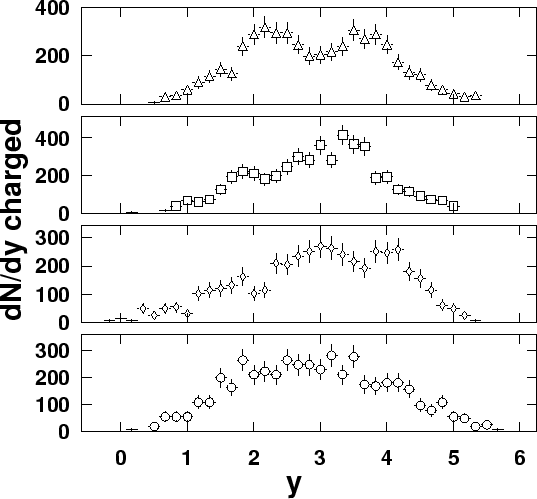 |
 |
This is a variable parameter. The fireball
multiplicity is Gaussian with variable mean and sigma
![]() , subject
to the constraint of fixing the total event multiplicity in a
given event (Subsection 7.2.2 describes the mathematical
technique).
, subject
to the constraint of fixing the total event multiplicity in a
given event (Subsection 7.2.2 describes the mathematical
technique).